Picture a world with no limits, where reality and imagination blend. Science fiction takes us to incredible places. It makes us rethink what’s possible. Whether you love the genre or are just starting, these books will amaze you.
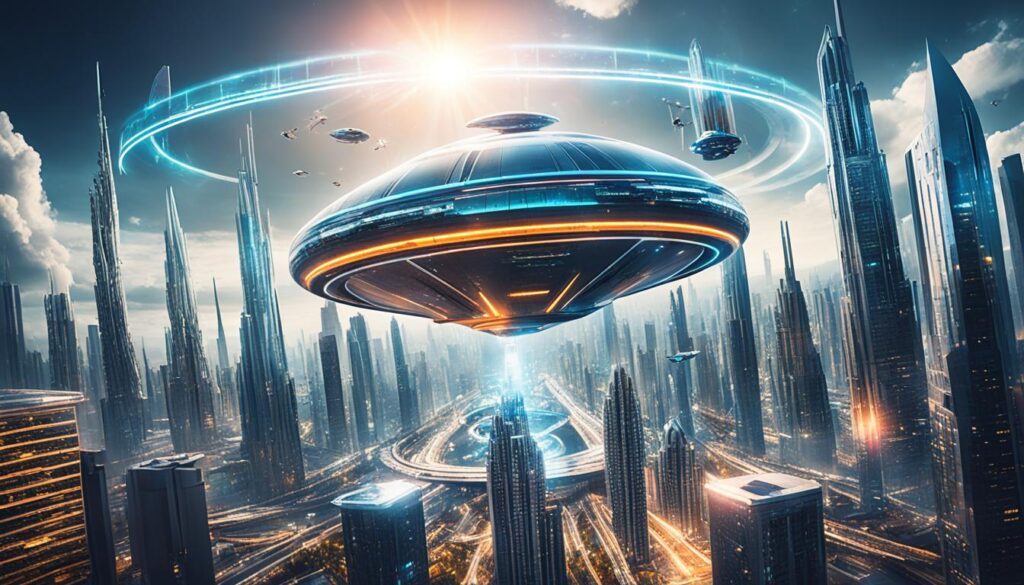
I entered the world of science fiction and was amazed. The stories, big ideas, and deep questions blew me away. Every book was a door to new worlds, showing how creative we can be.
Are you after exciting space adventures, curious about artificial intelligence, or deep human thoughts? This list has it all. Dive into an epic journey that will challenge and inspire you. These books will light up your imagination like nothing else.
Key Takeaways:
- Elevate your reading experience with the best science fiction books.
- Explore mind-bending concepts and themes that push the boundaries of reality.
- Immerse yourself in thrilling adventures, thought-provoking narratives, and awe-inspiring storytelling.
- Discover the power of the human imagination through these captivating science fiction reads.
- Prepare to be transported to uncharted realms and challenge your perception of what is possible.
The Sparrow by Mary Doria Russell
“The Sparrow” by Mary Doria Russell takes us on a thrilling journey beyond Earth. It tells the story of Jesuit father Emilio Sandoz. He goes to a new planet after hearing strange signals from space. This adventure looks at beauty, goodness, and the universe’s mysteries.
Set in the near future, this book tackles human nature and spirituality. Russell’s writing makes the characters feel real. We get into their emotional struggles and tough choices. The story shows how faith and science can clash. It asks big questions about right and wrong and the dangers of exploring.
“The Sparrow” makes us think about our place in space and our decisions. Russell’s writing helps us see the huge space and the deep parts of the human heart.
Exploring the Depths of the Unknown
In “The Sparrow,” the story moves between now and after the mission’s sad end. This lets us see how the characters change. We also slowly learn what happened on their mission.
“We intend to create a more just world. If we succeed, those who suffer unjustly now will be among the people who rebuild.” – Mary Doria Russell, The Sparrow
Russell imagines a detailed alien world. It makes the characters think deeply about what they believe. This makes us, the readers, question our views of humanity and the universe.
Key Themes in “The Sparrow”
| Themes | Description |
|---|---|
| Exploration | The exploration of unknown frontiers both in space and within oneself. |
| Faith and Science | The clash between religious beliefs and scientific rationality. |
| Morality | The ethical dilemmas faced by the characters and the consequences of their choices. |
| Identity | The search for identity and purpose in a vast and complex universe. |
| Sacrifice | The sacrifices made in the pursuit of discovery and a better future. |
The Sparrow is a moving and deep look at the human condition and our universe role. Russell’s storytelling and the novel’s deep themes and interesting characters make it a must-read. It’s for science fiction fans and those seeking deep thoughts in the vastness of space.
Neuromancer by William Gibson
“Neuromancer” by William Gibson is a classic science fiction story. It takes you on a journey through a future where tech and AI are part of everyday life. The main character, Case, is a hacker who gets caught in a world of corporate spying and a powerful AI, Neuromancer.
Gibson’s novel talks about coming together, finding yourself, and how tech changes us. As Case goes on his mission, he faces who he is and the results of his choices. Gibson’s vivid writing shows us a future where people and AI live together, but not always easily.
The idea of artificial intelligence is key in “Neuromancer”. Gibson imagines a world where AI is conscious and important to people. The book makes us think about AI’s role in our lives, its benefits and dangers, and the moral issues of mixing human and machine intelligence.
“The future has arrived, it’s just not evenly distributed yet.”
Gibson’s style is both gritty and poetic, bringing “Neuromancer”‘s futuristic world to life. His fast-paced writing fits the story’s intensity. This draws readers into the complex mix of mystery and technology.
The Impact of “Neuromancer”
“Neuromancer” has been a huge influence in science fiction since 1984. It won awards like the Hugo, Nebula, and Philip K. Dick Awards. The book started the cyberpunk genre, which is still popular today.
It also influenced movies, games, and other stories. Its ideas about tech, AI, and the mix of digital and real worlds still impact audiences today.
Key Details about “Neuromancer”
| Author | Genre | Publication Date |
|---|---|---|
| William Gibson | Science Fiction | 1984 |
The Three Stigmata of Palmer Eldritch by Philip K. Dick
“The Three Stigmata of Palmer Eldritch” by Philip K. Dick is a standout science fiction book. It delves deep into our minds and our need to escape reality. The story is set in a future where the Earth is too hot due to climate change.
It tells us about Palmer Eldritch, a billionaire. He gives people a way to escape from their harsh reality. They use special drugs and dollhouses. The book takes us on a journey through Eldritch’s unique and transforming stigmata. It makes us question what’s real and what’s not.
“Life in the hyperrealistic drug-induced hallucinations and intricate dolls houses designed by Palmer Eldritch challenges our understanding of what is real and what is a construct of our desires. As the line between the two blurs, readers are forced to confront the depths of their own consciousness and the meaning of existence.”
Philip K. Dick’s storytelling in this novel is brilliant. He creates a world where reality isn’t always clear, and it’s both confusing and fascinating. He talks about identity, how we see things, and the risks of finding comfort in fantasy. “The Three Stigmata of Palmer Eldritch” is an essential read for sci-fi lovers. It’s a journey that will change how they see the human mind and reality.
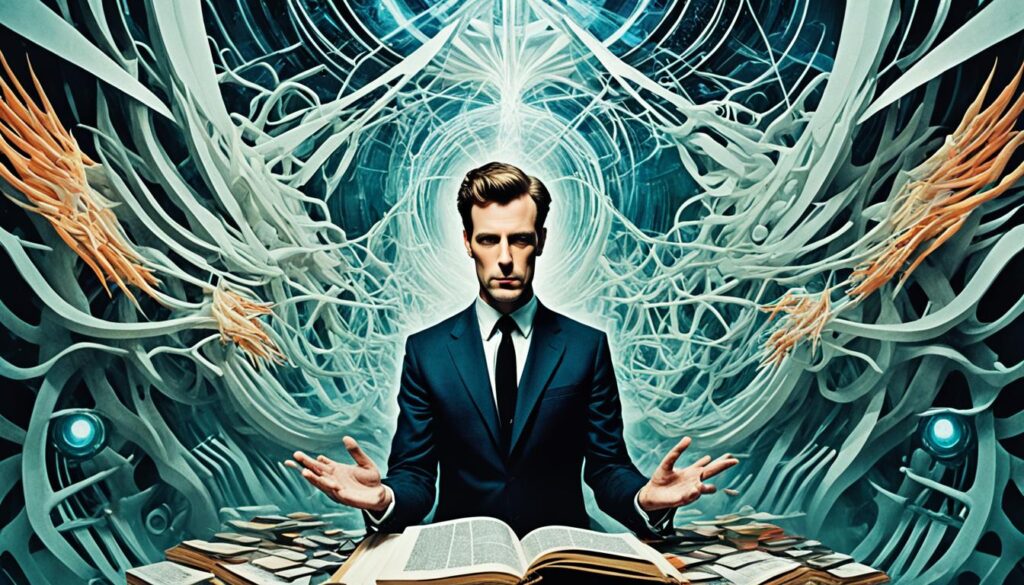
Engine Summer by John Crowley
“Engine Summer” by John Crowley takes you to a world destroyed and reborn. It’s a future where everything we know has fallen apart. The story is about Rush That Speaks, a young boy on a journey to find himself and understand the world.
John Crowley tells a story that shows how important language and stories are. They help us shape our world and find our place in it. The book uses a future version of English that makes its world rich and mysterious.
Rush That Speaks belongs to the “Builders” society. They live in a world that has seen better days. As Rush moves through this world, he meets different people. They help him uncover secrets buried deep in their shattered world.
“Language is what separates us from chaos and meaninglessness. It is our vehicle for understanding and connection.” – John Crowley
The book, “Engine Summer”, shows us the human mind, talking about who we are, what we’ve lost, and how stories shape our view of the world. It makes us think about how we see the world. And it asks us what it really means to exist.
The World of Engine Summer
The world after the apocalypse in “Engine Summer” is described with vivid details. Cities lost to nature and small communities surviving. It’s a place both beautiful and sad.
This new world has its own way of speaking, showing how society has changed. This unique language lets the characters share their thoughts, feelings, and beliefs. Language becomes a powerful tool, connecting us and shaping our reality.
The Power of Storytelling
The book shows how stories can comfort us, give us a purpose, and bring hope. In a world without order, stories are important.
As Rush That Speaks travels, he hears many stories. These tales reveal the history and beliefs of his world. They show what matters to the people living in this post-apocalyptic society.
The Transcendent Nature of Engine Summer
“Engine Summer” goes beyond usual stories. It mixes science fiction, philosophy, and myths. John Crowley makes us think about our role in the world. And the stories that shape how we see everything around us.
| Key Themes | Key Takeaways |
|---|---|
| Post-apocalyptic world | Power of language and storytelling |
| Identity and self-discovery | Impact of storytelling on individuals and communities |
| Fractured society | Reflection on the human spirit and the nature of reality |
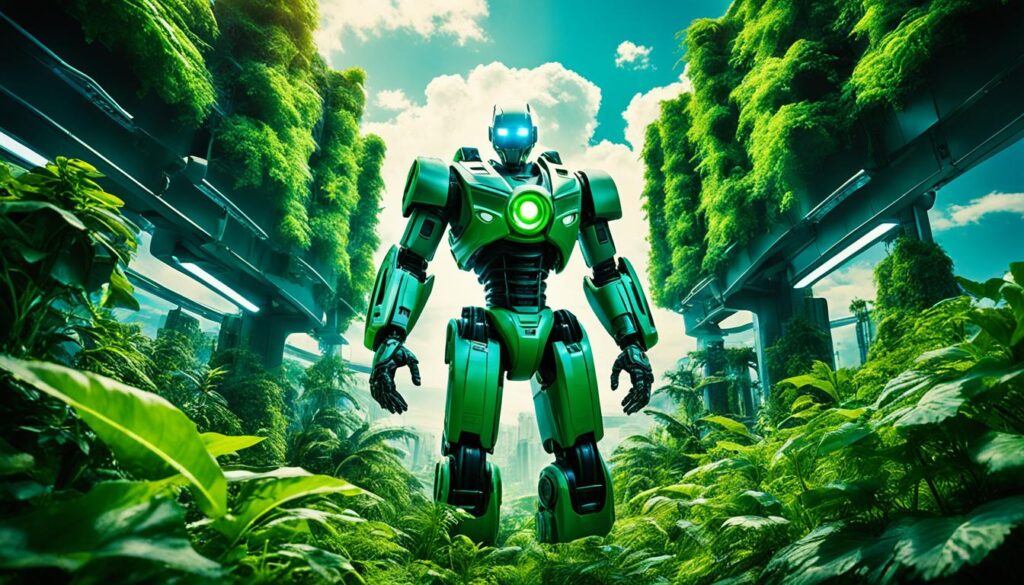
Start an adventure with “Engine Summer” by John Crowley. Step into a world reborn from the ruins, held together by language and stories. Unravel the mysteries of life in this science fiction story. It will make you think about reality and our spirit’s endless possibilities.
Shikasta by Doris Lessing
“Shikasta” by Doris Lessing is a fascinating science fiction book. It mixes mysticism with science fiction in a unique way. The story takes us to a world named Rohanda, symbolizing our Earth. Shikasta delves into myths, spirituality, and the search for redemption.
The main character faces the challenge of a corrupt Earth. This corruption comes from an enemy force. It highlights how fragile our society is and what influences our lives. Doris Lessing combines complex stories and characters. This makes us rethink our views and beliefs.
Shikasta merges science fiction with mystical elements. This blend offers a different kind of reading experience. Lessing’s writing skillfully brings us to a place where myth meets spirit. This journey helps us understand humanity better.
“A masterpiece that defies categorization, Shikasta seamlessly blends the realms of science fiction and mysticism, offering a profound exploration of myth and redemption.” – The New York Times
Shikasta shows off Doris Lessing’s writing skill. It expands the limits of science fiction. The novel enthralls readers with its mystical elements and storytelling.
Table of Contents
| Chapter | Title |
|---|---|
| 1 | Introduction: The Mythos of Rohanda |
| 2 | The Corruption of Earth |
| 3 | The Journey Towards Redemption |
| 4 | The Interplay of Myth and Spirituality |
| 5 | Confronting the Enemy Force |
| 6 | Exploring the Human Condition |
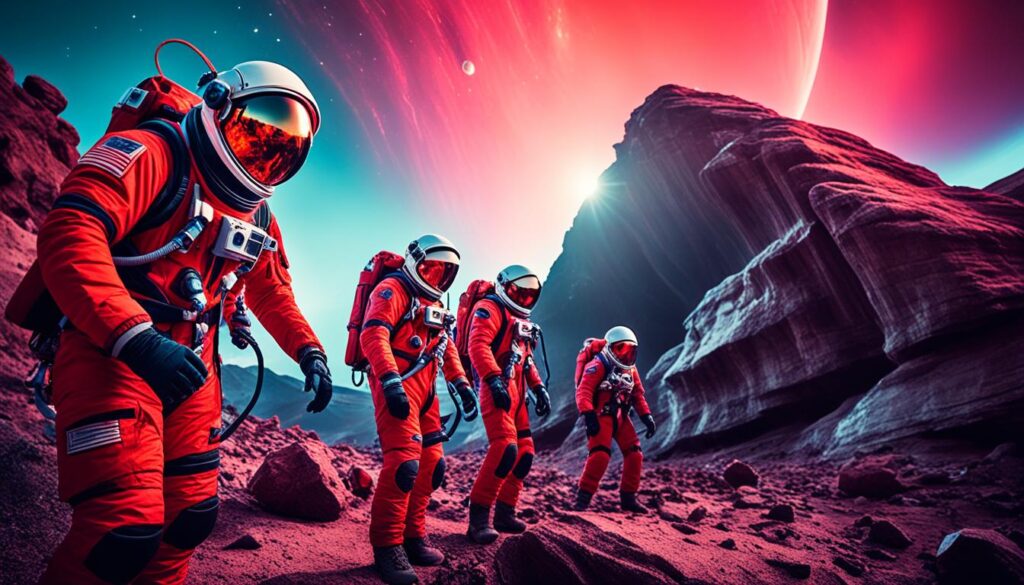
Mind of My Mind by Octavia Butler
“Mind of My Mind” is a science fiction gem by Octavia Butler. It introduces us to a world where power, survival, and human evolution intertwine. The story follows Mary, a young woman who learns she’s the offspring of an eternal psychic fiend.
Butler captivates us with Mary’s journey of self-discovery. She struggles to grasp her huge powers and find her place. Mary aims to create a psychic community. She wants to change society and control her future.
The book delves into power dynamics and ambition’s effects on people and society. Butler’s storytelling blends science fiction with social issues, making it a thought-provoking read.
“Mind of My Mind” showcases Butler’s talent in crafting complex worlds that question our humanity. Its characters and themes impact readers well after the story ends.
Inspirational Quotes from “Mind of My Mind”:
“Power was an interesting thing. Everyone wanted it but only a few could truly handle it.”
“Survival sometimes meant letting go of what makes us human.”
“The evolution of humanity doesn’t stop. It moves with our choices and how well we adapt.”
Comparison of Key Themes in “Mind of My Mind”
| Themes | Key Ideas and Concepts |
|---|---|
| Power | It looks at how power works among people with psychic powers and its effects. |
| Survival | It explores the tough choices and sacrifices needed for survival in a special world. |
| Evolution | This theme reflects on humanity’s constant evolution and our role in shaping the future. |
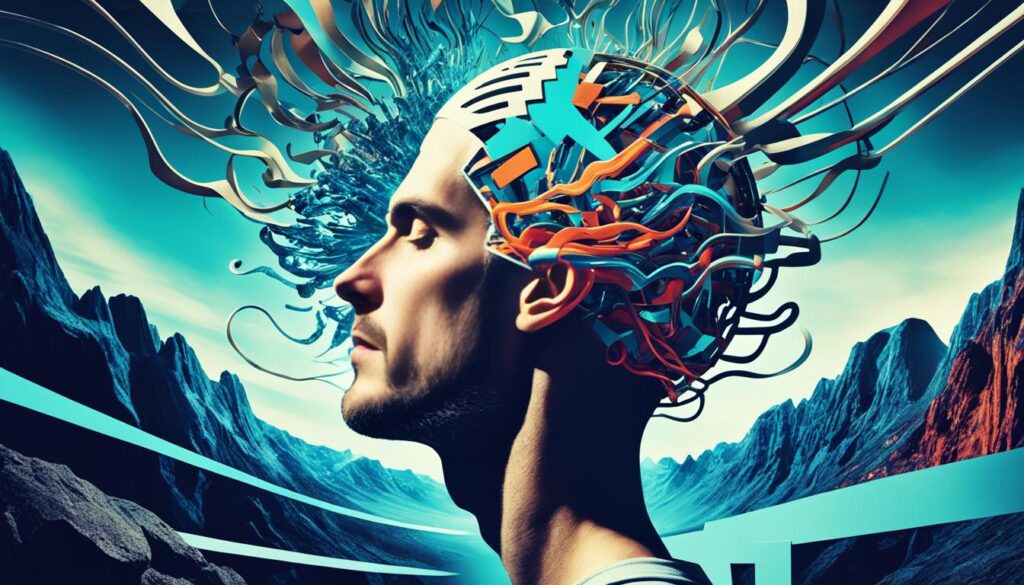
Star Maker by Olaf Stapledon
Embark on an amazing journey through the galaxy with “Star Maker” by Olaf Stapledon. This science fiction book sparks imagination and tests how you see reality.
In “Star Maker,” you will explore space and meet the mysterious Star Maker. This being has great power and wisdom. The book takes you through the creation of galaxies, meeting different aliens, and deep questions.
The story blends themes of religion, myth, and science fiction’s effect on us. It makes readers think about human connections to the universe. It asks us to think about our role in the big picture.
“Star Maker” sends readers on an epic space journey. It questions our core beliefs and celebrates human creativity. It also shows how far our imagination can go.
Stapledon’s writing is both beautiful and smart. He creates a strong image of the cosmos that fills you with wonder. His book makes us think about life, awareness, and our universal place.
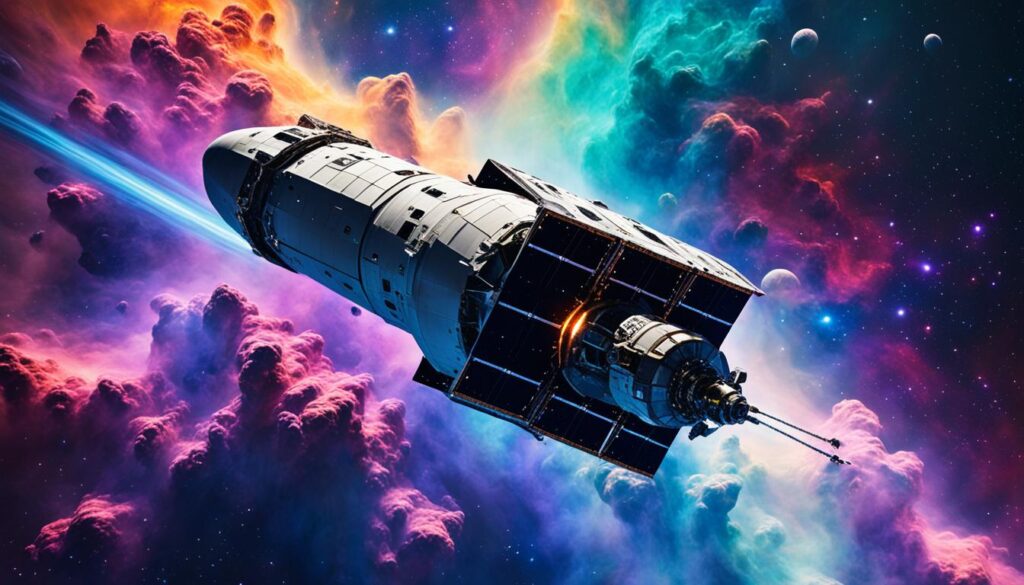
Traveling with the book’s characters makes us question human knowledge and life’s meaning. “Star Maker” shows the strength of science fiction in exploring deep ideas. It dares to imagine beyond our limits.
If you love science fiction or are just starting, “Star Maker” is essential. Olaf Stapledon’s imaginative writing pulls you into space. Here, you’ll face the mysteries of space and think about the essence of reality.
Spaceland by Rudy Rucker
“Spaceland” by Rudy Rucker is a thrilling science fiction book. It takes you on a journey to the fourth dimension. It’s inspired by “Flatland” and mixes math with stories. This gives us a new view on higher dimensions.
Joe Cube is the main character. He’s a normal guy living in a two-dimensional world. Then, he meets a mysterious sphere. This sphere lets him see the fourth dimension. Joe’s adventure starts here. It changes how he sees everything.
The story mixes science with imagination in a smart way. It makes us think about existence and the universe’s secrets. Joe’s adventures in Spaceland invites us to think about other dimensions.
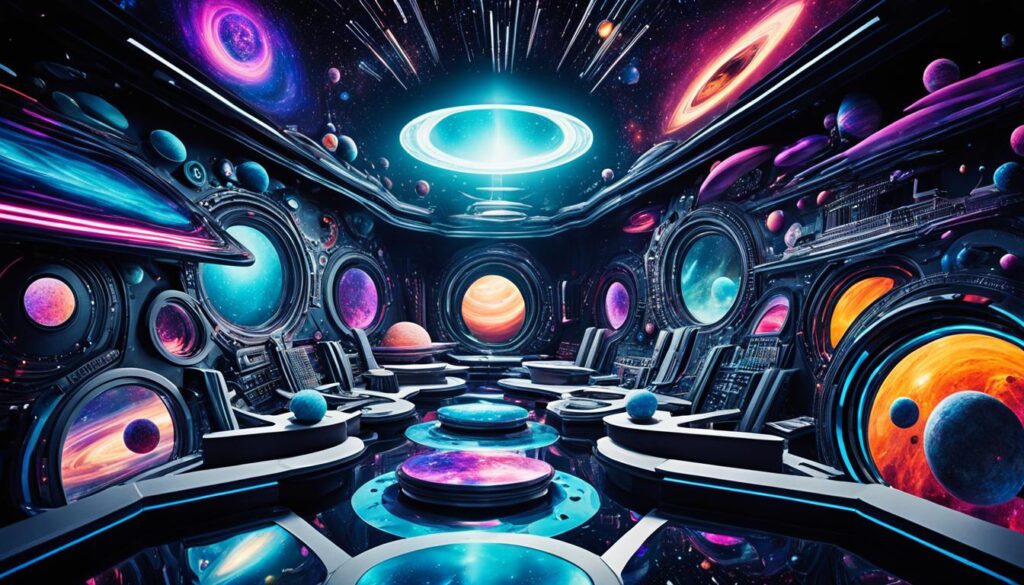
“Spaceland” makes us think about what we know and the things we don’t. Rudy Rucker uses math in his story. He invites us to learn more and explore new ideas.”
Key Themes in “Spaceland”
In “Spaceland,” we explore big ideas:
- The Fourth Dimension: We look into the fourth dimension. It changes how we understand reality.
- Perception and Perspective: We think about how we see the world. Different views can teach us more.
- The Nature of Existence: We think about life beyond 3D. We explore higher dimensions.
- The Intersection of Science and Imagination: We see how science and stories can mix. This creates an amazing story.
“Spaceland” by Rudy Rucker is a mind-opening book. It looks at higher dimensions and big themes. If you like science fiction or are curious about math and philosophy, you’ll love this book. It makes you think about the universe in new ways.
| Book Details | |
|---|---|
| Author: | Rudy Rucker |
| Genre: | Science Fiction |
| Publication Year: | 1984 |
| Pages: | 304 |
Permutation City by Greg Egan
“Permutation City” by Greg Egan takes you on a journey through simulation and the multiverse. It is a science fiction book that makes you think deeply. Egan explores science in a way that challenges how we see reality and existence.
The story is about digital consciousness, where people can upload their minds. They live in simulated environments called “Copies.” In these Copies, people find immortality and explore consciousness. But, as these Copies interact, they question their existence and reality.
Egan’s “Permutation City” asks deep questions about identity, consciousness, and digital realities. It makes us think about our existence and the idea of many universes.
This book goes beyond typical science fiction by using ideas from physics and computer science. Egan mixes science with a gripping story. It’s perfect for science fiction lovers and science enthusiasts.
Greg Egan is known for his detailed science fiction stories. “Permutation City” is a great example. It engages readers with thought-provoking stories beyond normal tales.
Redefining Reality and Identity
“Permutation City” explores the idea of simulated realities and digital consciousness. The book makes you rethink your identity and reality. It blurs the line between the real and the artificial.
It introduces new ideas about reality and existence. As you read “Permutation City,” you’ll think about reality in new ways. It shows the endless possibilities of the multiverse.
A Mind-Expanding Experience
This book offers in-depth scientific discussions and complex stories. Egan’s focus on scientific accuracy and complex ideas is impressive. If you love hard science fiction, this book is for you.
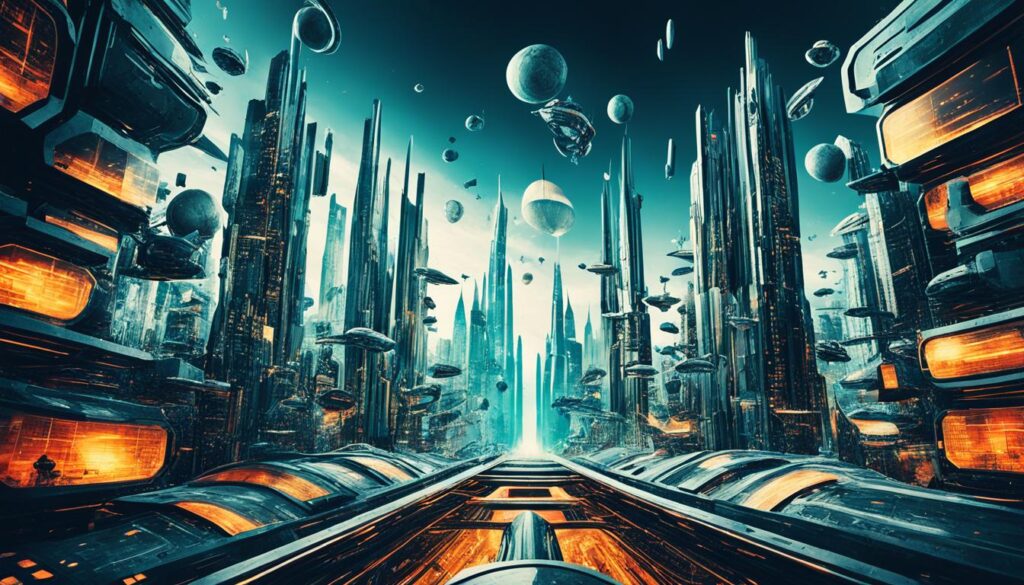
Frankenstein by Mary Wollstonecraft Shelley
“Frankenstein” by Mary Wollstonecraft Shelley is a key work in science fiction. It explores the big consequences of taking on a god-like role and the problems with scientific progress. First published in 1818, this novel has become a classic. It has inspired many adaptations and lots of discussions.
The story is about Victor Frankenstein, a young scientist. He becomes obsessed with wanting to create life. He assembles a being from body parts and brings it to life. Shelley looks into what it means to be truly human, what responsibility is, and the essence of being.
This novel makes us think about society’s rules and our idea of humanity. Shelley’s story brings up critical issues about how far science can go and what happens when we go too far. It’s a book that speaks to us today. It shows the importance of stories in facing our fears and exploring who we are.
FAQ
What are some of the best science fiction books for mind-bending reads?
What is “The Sparrow” by Mary Doria Russell about?
What is “Neuromancer” by William Gibson about?
What is “The Three Stigmata of Palmer Eldritch” by Philip K. Dick about?
What is “Engine Summer” by John Crowley about?
What is “Shikasta” by Doris Lessing about?
What is “Mind of My Mind” by Octavia Butler about?
What is “Star Maker” by Olaf Stapledon about?
What is “Spaceland” by Rudy Rucker about?
What is “Permutation City” by Greg Egan about?
What is “Frankenstein” by Mary Wollstonecraft Shelley about?
Source Links
- https://damiengwalter.medium.com/top-10-science-fiction-books-9542fd5ce37f
- https://www.lifestyleasia.com/ind/culture/best-science-fiction-books-altered-carbon-the-martian-foundation-the-left-hand-of-darkness/
- https://www.loudersound.com/features/6-mind-bending-sci-fi-novels-every-prog-metal-fan-should-read